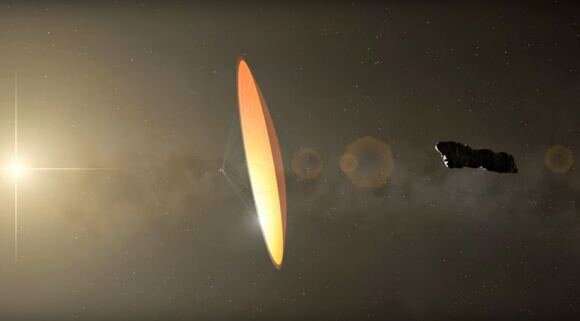
A puzzling object from a distant star system is streaking through our celestial neighborhood at unprecedented speed, representing just the third confirmed interstellar visitor ever found. The object, classified as C/2025 N1 or 3I/ATLAS, is moving quicker than any previously identified interstellar entity and could be considerably older than its predecessors. This discovery contributes to a remarkably limited list of cosmic nomads. Since astronomers launched systematic observations of the sky, only two other objects—’Oumuamua in 2017 and Comet 2I/Borisov in 2019—have been verified as visitors from outside our solar system. In contrast to the countless asteroids and comets that belong to our sun’s gravitational influence, these interstellar entities harbor secrets from far-off stellar environments.
### An Unexpected Find in Chile
The object was initially detected on July 1 by the Asteroid Terrestrial-impact Last Alert System (ATLAS) telescope in Chile. When astronomer Larry Denneau pressed the button to log the discovery, he remembers it appearing “entirely ordinary,” according to Nature. It was only after additional astronomers plotted its trajectory that the object’s extraordinary characteristics were recognized. “At that point, it really strikes you that this tiny button push you made the night before has sparked this excitement, and you have countless astronomers and millions of curious individuals focusing on it,” Denneau elaborates. The critical evidence resides in 3I/ATLAS’s trajectory through space. Instead of following the closed, elliptical path characteristic of solar system natives, this visitor describes a broad, open hyperbolic arc—mathematical confirmation of its alien origins. Traveling at approximately 68 kilometers per second, it will glide past our sun without succumbing to its gravitational pull.
### A Record-Breaking Cosmic Velocity
What distinguishes 3I/ATLAS is its extraordinary speed. The object is traversing significantly quicker than either of the earlier interstellar visitors, indicating it may have roamed the galaxy for a far longer duration than ‘Oumuamua or 2I/Borisov. Current observations reveal the object exhibiting comet-like traits, forming a tail as it expels gas and dust—unlike the asteroid-like ‘Oumuamua. This phenomenon provides astronomers with important insights into its makeup and structure as solar heating initiates the release of volatile materials frozen during its extensive voyage between the stars.
### Insight into Galactic Chemistry
This discovery arises at a crucial juncture for interstellar object research. Michele Bannister, an astronomer from the University of Canterbury who has worked with previous interstellar objects, describes the find as “fantastic” and anticipates it to be equally revolutionary for comprehending planetary creation beyond our solar system.
Key research avenues include:
– **Material analysis:** Spectroscopic studies will uncover the chemical composition of substances formed around a distant star
– **Birth conditions:** The characteristics of the object narrate the tale of its origin in an alien protoplanetary disk
– **Galactic inventory evaluation:** Each find assists scientists in understanding how many such objects exist and their possible risks to Earth
– **Planetary system investigation:** Interstellar objects are relics from the initial phases of planetary development
The timing of 3I/ATLAS’s emergence is especially advantageous. The object will remain observable to Earth-bound and space telescopes sufficiently for thorough examination as it traverses the inner solar system in October. Its trajectory will also bring it close enough to Mars that the Mars Reconnaissance Orbiter might succeed in observing it.
### More Discoveries Ahead
Astronomers anticipate the velocity of interstellar object discoveries to increase significantly. The newly operational Vera C. Rubin Observatory in Chile has already located more than 2,100 previously unknown asteroids in its inaugural week—surpassing what most observatories uncover in an entire year. Research forecasts propose the Rubin telescope might identify between 6 and 51 interstellar objects throughout its intended ten-year survey, potentially clarifying whether such cosmic wanderers are prevalent throughout the galaxy or signify rare survivors from stellar disasters.
With advanced telescopes now monitoring the sky with unmatched sensitivity, 3I/ATLAS may herald the onset of a new epoch in interstellar exploration—one that could fundamentally alter our comprehension of planetary development across the universe.
**No paywall here**
*If our reporting has informed or inspired you, consider making a contribution. Every donation, regardless of its size, empowers us to keep providing precise, engaging, and credible science and medical news. Independent journalism demands time, effort, and resources—your support ensures we can continue revealing the stories that resonate most with you.*
Join us in promoting accessible and meaningful knowledge. Thank you for your support!